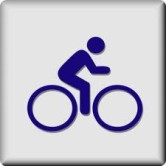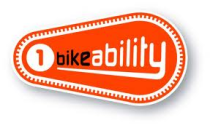Products
Welcome to Bikeability - 'cycling proficiency' for the 21st Century! If you're thinking about getting on your bike, why not complete your Bikeability? It's fun and gives you the skills and confidence to cycle in modern road conditions.
Level 1 Bikeability
During Level 1 Bikeability training, you'll learn to control and master your bike. The training takes place in an environment away from cars or traffic – usually in a playground or closed car park. You will gain basic cycle control skills including starting and pedalling; stopping; manoeuvring; signalling and using the gears on your bike. You will usually be trained in groups of 3-12 cyclists, although individual training may also be available in your area.
Once you’ve completed your Bikeability Level 1 and been awarded your red badge, you will be able to:
- Get on your bike, start cycling, then stop and get off
- Ride your bike using the gears
- Look then signal
- Make your bike go where you want it to, including moving around objects safely
- Stop quickly if you need to
- Look all around you when you’re riding, including behind, without wobbling
- Signal if you’re turning right and left, without wobbling
- Give your bike a simple check to ensure it is road-worthy
Know your wheels
Here are our top tips for keeping your bike in tip-top condition:
- Tyres– make sure your tyres are pumped up. Give them a pinch to make sure they are hard. If they feel soft, get someone to pump them up. Check they are not worn down
- Brakes– test them before every ride and make sure they are not rubbing against the tyres
- Chain– make sure it’s not hanging off, broken or rusty
- Saddle– make sure it’s adjusted to the right height. Too high or too low and it won’t be comfortable or safe. To get the right height, adjust the saddle until you can stretch your leg out and comfortably place the ball of your foot on the ground. This means that when your pedal is at its lowest position, your leg should be slightly bent
- Lights and reflectors – if you’re planning on riding at night make sure the lights on the front and back of your bike are both working and not covered up by mud or anything. You should also use your lights when the visibility is low, such as in bad weather






